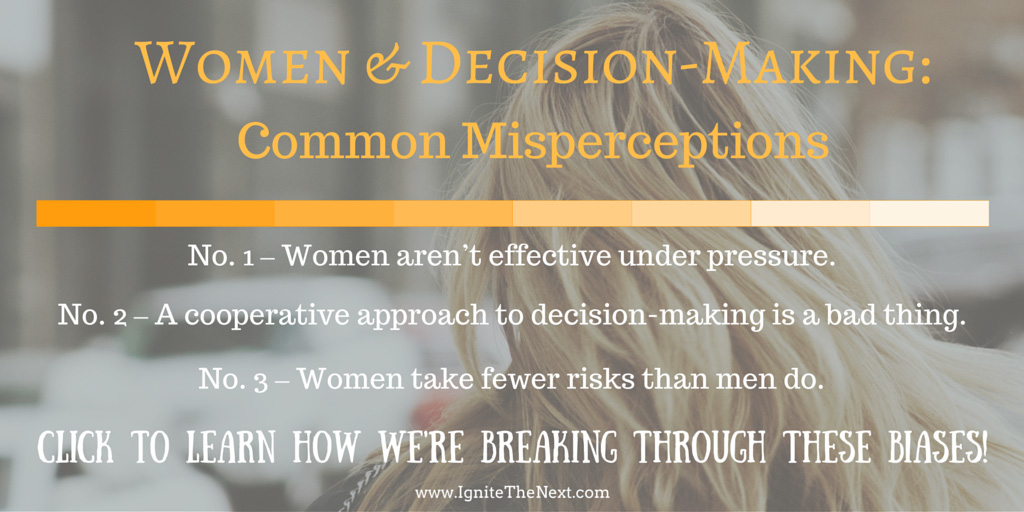
Unfortunately, misconceptions and double standards persist when it comes to how women make decisions and whether they are as effective as men. But, what’s one of the best ways to improve your organization’s effectiveness around decision-making?
Make sure women are included in the process.
Organizations are now expected to do more with less while continuing to be cutting-edge, innovative, and customer-centric. Which makes strategic decision-making a top priority.
Do women make decisions differently from men? Yes, they do. However, studies show that asking for input from both men and women leads to better results.

Unfortunately, with women holding only 14 percent of the top 5 leadership positions within organizations, by default, most C-Suite decisions are made by men.
CNN Money recently reported that companies with a high representation of women board members significantly outperformed those with no female directors, according to a 2011 Catalyst analysis of financial results at Fortune 500 companies.
The truth, as it turns out, is that women are equal to men in decision-making skills, and in some cases, more effective.
Ready to break through some of the misconceptions?
Here are 3 common misconceptions about women and decision-making, and how to break through.
Misconception No. 1 – Women aren’t effective under pressure.
As it turns out, research has shown that women’s brains are more efficient at handling the stress hormone cortisol than men’s brains. Neuroscience has uncovered evidence suggesting that when the pressure is on, women bring unique strengths to decision-making.
According to separate neuroscience studies conducted at the University of Southern California and Duke University, women make less risky decisions under high-stress situations.
The New York Times explained that “under low-stress situations, men and women make decisions about equally well [but] men took more risks when they were stressed. They became more focused on big wins, even when they were costly and less likely.”
Organizations with women at the decision-making table actually make less risky, more empathetic decisions in stressful situations. This alone is reason enough to have both men and women in the room to counterbalance each other when crucial business decisions need to be made.
Misconception No. 2 – A cooperative approach to decision-making is a bad thing.
Women are often considered weak or indecisive when they include others in the decision-making process.
However, research shows that men tend to look for holes or weaknesses in an argument whereas women continually seek a creative solution—listening for ideas, adjusting their understanding of what is important, and asking for relevant details, according to the Harvard Business Review.
Women tend to strive to build relationships and are more aware of the challenges of balancing multiple stakeholders’ interests.
“A March 2013 study published in the International Journal of Business Governance and Ethics finds that female directors are more likely to consider the rights of others and to take a cooperative approach to decision making in order to arrive at a fair and moral decision that benefits all parties.”
Misconception No. 3 – Women take fewer risks than men do.
Women are often labeled risk averse; however, anecdotal evidence reveals the opposite is true.
Cognitive psychologist Therese Huston, author of “How Women Decide,” contends that “despite popular misconceptions, women are just as decisive as men—though they may pay a price for it.”
Women often find themselves trapped in a double bind: Take risks and be perceived as careless, or be conservative and labeled ineffective.
Regardless of lingering double standards, the fact is that diversity in leadership backgrounds translates into fiscal success. That’s why it’s imperative that organizations reach out to women and encourage them to bring different skills to the decision-making table.
Where does your organization struggle when it comes to including the voices of women leaders in the decision-making process, especially in the C Suite?





